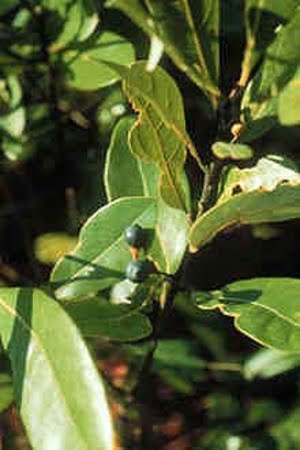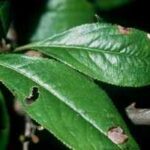Shady areas in a landscape have a tendency to be tricky on many flowers, shrubs, and trees. If you’d like to liven up a sun starved area of your yard or garden with native trees, then these selections will help you decide which ones are right for you.
Aesculus pavia L. (Red Buckeye)
Kingdom Plantae – Plants
Subkingdom Tracheobionta – Vascular plants
Superdivision Spermatophyta – Seed plants
Division Magnoliophyta – Flowering plants
Class Magnoliopsida – Dicotyledons
Subclass Rosidae –
Order Sapindales –
Family Hippocastanaceae – Horse-chestnut family
Genus Aesculus L. – buckeye
Species Aesculus pavia L. – red buckeye
This deciduous tree can also be a bushy shrub in some locations. It is a fast growing to its mature height of 15-25 feet. It will flower in dark red tubular flowers form April to May, and is a prime pick for those who want a splash of color. Hummingbird friendly, this tree will also attract bees. It prefers shady locations and will bloom early for first color in your garden. Keep in mind; this is a short lived tree.
Carya aquatica (Michx. f.) Nutt. (Water Hickory, Bitter Pecan)
Kingdom Plantae – Plants
Subkingdom Tracheobionta – Vascular plants
Superdivision Spermatophyta – Seed plants
Division Magnoliophyta – Flowering plants
Class Magnoliopsida – Dicotyledons
Subclass Hamamelidae –
Order Juglandales –
Family Juglandaceae – Walnut family
Genus Carya Nutt. – hickory
Species Carya aquatica (Michx. f.) Nutt. – water hickory
This tree gets up to 65 feet tall and one foot wide. It has a narrow crown and prefers partial shade with wet soil. Its flowers are yellow and its fruits are nuts in thin husks. The seeds have a bitter taste, giving the name “Bitter Pecan”. Its bark is shaggy and scaly and lends texture to the tree. Its wood is difficult to work with and is used normally as a fuel source.
Carya ovata (P. Mill.) K. Koch (Shagbark Hickory)
Kingdom Plantae – Plants
Subkingdom Tracheobionta – Vascular plants
Superdivision Spermatophyta – Seed plants
Division Magnoliophyta – Flowering plants
Class Magnoliopsida – Dicotyledons
Subclass Hamamelidae –
Order Juglandales –
Family Juglandaceae – Walnut family
Genus Carya Nutt. – hickory
Species Carya ovata (P. Mill.) K. Koch – shagbark hickory
This particular hickory has richly aromatic leaves and the wood is good for meat smoking in barbeques. It will get up to 70-90 feet tall with a spread of 30-40 feet. It is a slow grower. Known as the best tasting of the hickory nuts; one mature tree will ripen 2-3 bushels a year. It is shade tolerant and can tolerate normal drought. Plant this in sun or partial shade for maximum growth. This is bold and ornamental in the landscape.
Cornus amomum P. Mill. (Silky dogwood)
Kingdom Plantae – Plants
Subkingdom Tracheobionta – Vascular plants
Superdivision Spermatophyta – Seed plants
Division Magnoliophyta – Flowering plants
Class Magnoliopsida – Dicotyledons
Subclass Rosidae –
Order Cornales –
Family Cornaceae – Dogwood family
Genus Cornus L. – dogwood
Species Cornus amomum P. Mill. – silky dogwood
Another great selection for bird lovers, the silky dogwood will grow from 6-15 feet. It has abundant small white flowers from May to June, and will produce blue berry-like fruit from August to September. It’s this fruit that makes it a favorite for birds. It favors partial shade. Although it does flower, it is decidedly non-fragrant.
Crataegus aestivalis (Walt.) Torr. & Gray (May hawthorn)
Kingdom Plantae – Plants
Subkingdom Tracheobionta – Vascular plants
Superdivision Spermatophyta – Seed plants
Division Magnoliophyta – Flowering plants
Class Magnoliopsida – Dicotyledons
Subclass Rosidae –
Order Rosales –
Family Rosaceae – Rose family
Genus Crataegus L. – hawthorn
Species Crataegus aestivalis (Walt.) Torr. & Gray – may hawthorn
This tree gets up to 20-30 feet high and wide; preferring partial shade and moist soil. It has white blooms in spring. It grows moderately fast and easily. Herbal folklore has it as a heart tonic, as a tea or a tincture. Its green leaves turn yellow in fall and its fruits are red dotted, resembling a crabapple.
Fagus grandifolia Ehrh. (American Beech)
Kingdom Plantae – Plants
Subkingdom Tracheobionta – Vascular plants
Superdivision Spermatophyta – Seed plants
Division Magnoliophyta – Flowering plants
Class Magnoliopsida – Dicotyledons
Subclass Hamamelidae –
Order Fagales –
Family Fagaceae – Beech family
Genus Fagus L. – beech
Species Fagus grandifolia Ehrh. – American beech
A slow growing tree that prefers partial shade and well drained soil. It will get 50-80 feet tall and have a spread of 40-60 feet. It has golden brown fall color and its fruits (nuts) will attract birds and squirrels. It has flowers that will appear just after the leaves. Beech has sensitivity to heat and drought.
Fraxinus caroliniana P. Mill. (Carolina Ash)
Kingdom Plantae – Plants
Subkingdom Tracheobionta – Vascular plants
Superdivision Spermatophyta – Seed plants
Division Magnoliophyta – Flowering plants
Class Magnoliopsida – Dicotyledons
Subclass Asteridae –
Order Scrophulariales –
Family Oleaceae – Olive family
Genus Fraxinus L. – ash
Species Fraxinus caroliniana P. Mill. – Carolina ash
Growing up to 25-50 feet tall and having a trunk diameter of 6 inches this Ash prefers partial shade and wet soil. It has light green leaves and one winged samara fruits that mature around October or November. It has ash grey bark.
Magnolia tripetala (L.) L. (Umbrella Magnolia, umbrella-tree)
Kingdom Plantae – Plants
Subkingdom Tracheobionta – Vascular plants
Superdivision Spermatophyta – Seed plants
Division Magnoliophyta – Flowering plants
Class Magnoliopsida – Dicotyledons
Subclass Magnoliidae –
Order Magnoliales –
Family Magnoliaceae – Magnolia family
Genus Magnolia L. – magnolia
Species Magnolia tripetala (L.) L. – umbrella-tree
With one to two foot diamond shaped leaves, the umbrella tree really is a canopied marvel. It gets up to 40 feet tall and has a 20-30 foot spread. It will have several trunks and large showy flowers that are typical to the magnolia taxa. Its cone like fruit will mature in August or September and is pollinated by beetles. This magnolia prefers partial shade or full shade and is not drought tolerant. An ornamental favorite for any garden, this tree will do you proud.
Magnolia virginiana L. (Sweetbay)
Kingdom Plantae – Plants
Subkingdom Tracheobionta – Vascular plants
Superdivision Spermatophyta – Seed plants
Division Magnoliophyta – Flowering plants
Class Magnoliopsida – Dicotyledons
Subclass Magnoliidae –
Order Magnoliales –
Family Magnoliaceae – Magnolia family
Genus Magnolia L. – magnolia
Species Magnolia virginiana L. – sweetbay
A slow-growing evergreen tree, this magnolia species can grow from 50-100 feet. It produces spectacular white flowers from April to July and will have red fruits from July to October. It will do perfectly in a partly shady spot in your landscape. Two-thirds of all magnolia wood is used for furniture, but it is also used for Popsicle sticks, tongue depressors, and broom handles. It is important forage for deer and cattle, making up 25% of their diet in the winter.
Persea borbonia (L.) Spreng. (Redbay)
Kingdom Plantae – Plants
Subkingdom Tracheobionta – Vascular plants
Superdivision Spermatophyta – Seed plants
Division Magnoliophyta – Flowering plants
Class Magnoliopsida – Dicotyledons
Subclass Magnoliidae –
Order Laurales –
Family Lauraceae – Laurel family
Genus Persea P. Mill. – bay
Species Persea borbonia (L.) Spreng. – redbay
Redbay will get up to 70 feet tall and has bright green aromatic leaves. It prefers light shade and moist soil. Its flowers are small light yellow green and hang in clusters; its fruits are dark blue in fall. The bark is dark with a reddish tint. Seeds are used as quail food and the leaves have been used for flavorings.



